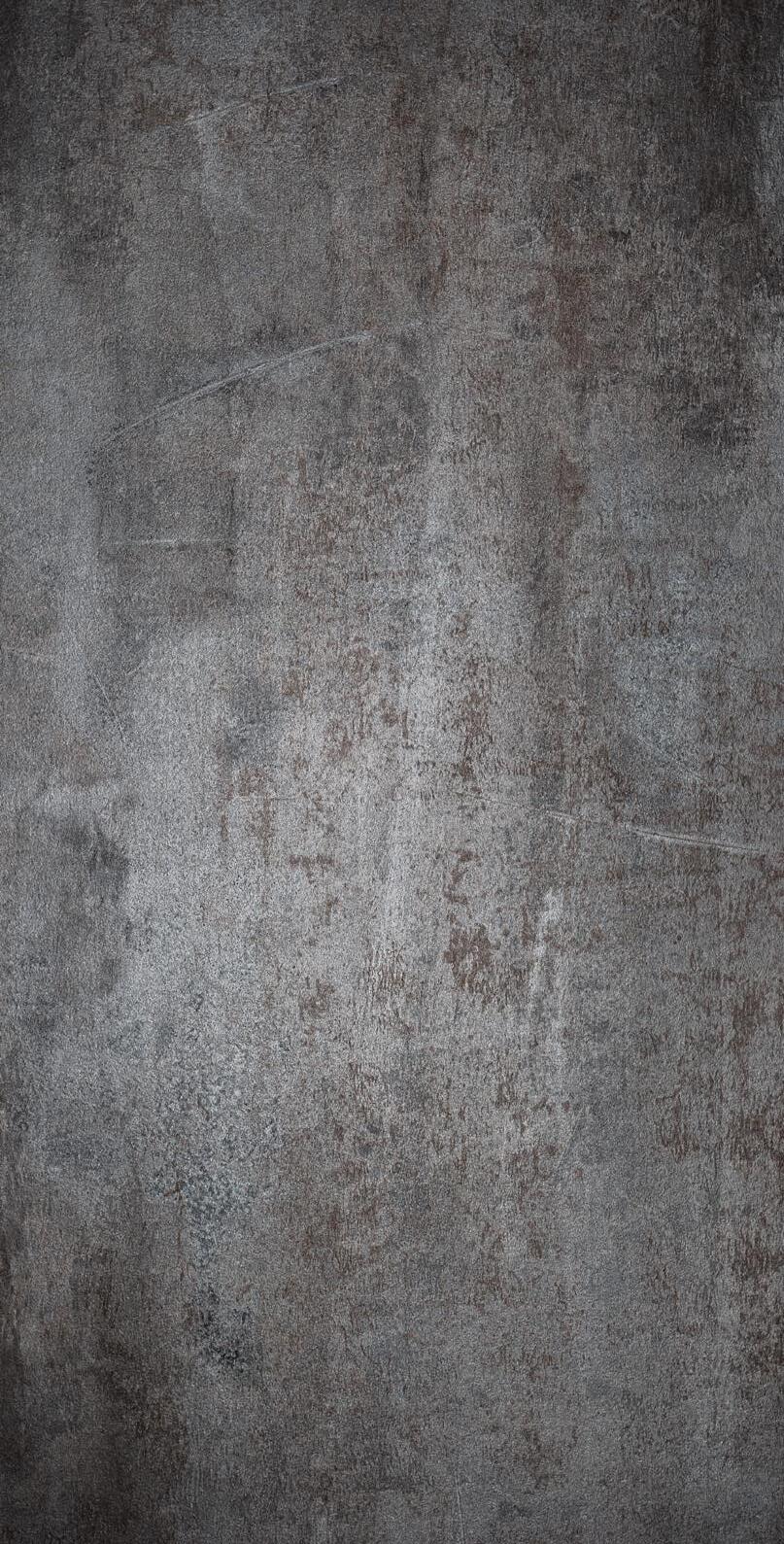







See the latest wind power developments and U.S. project news on our website. Also find expert webinars and more from the leading wind power engineering magazine today.

















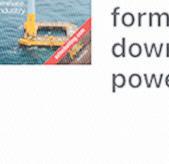



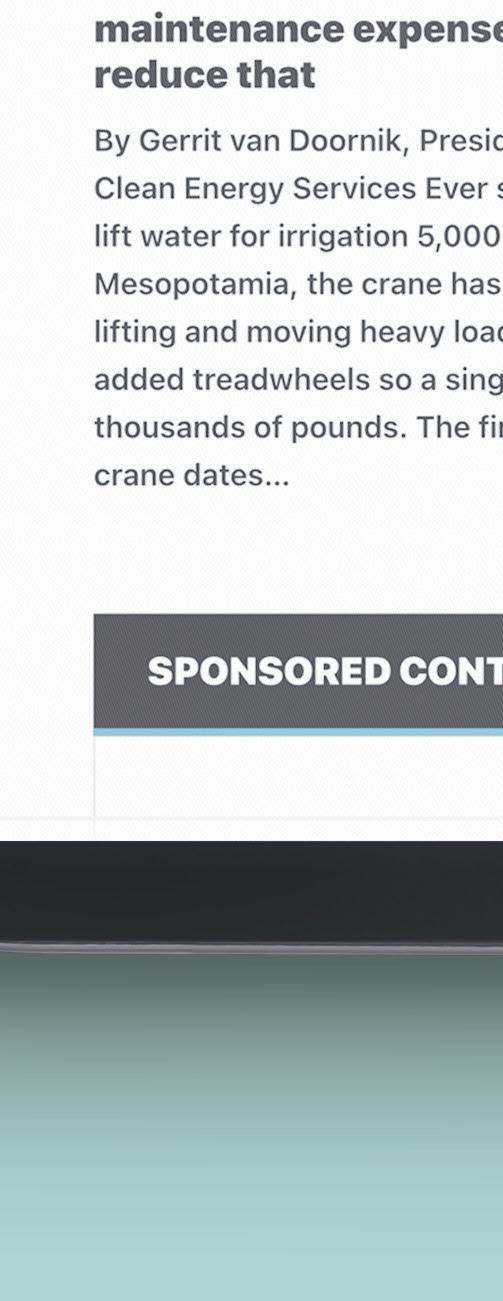

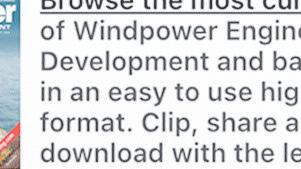






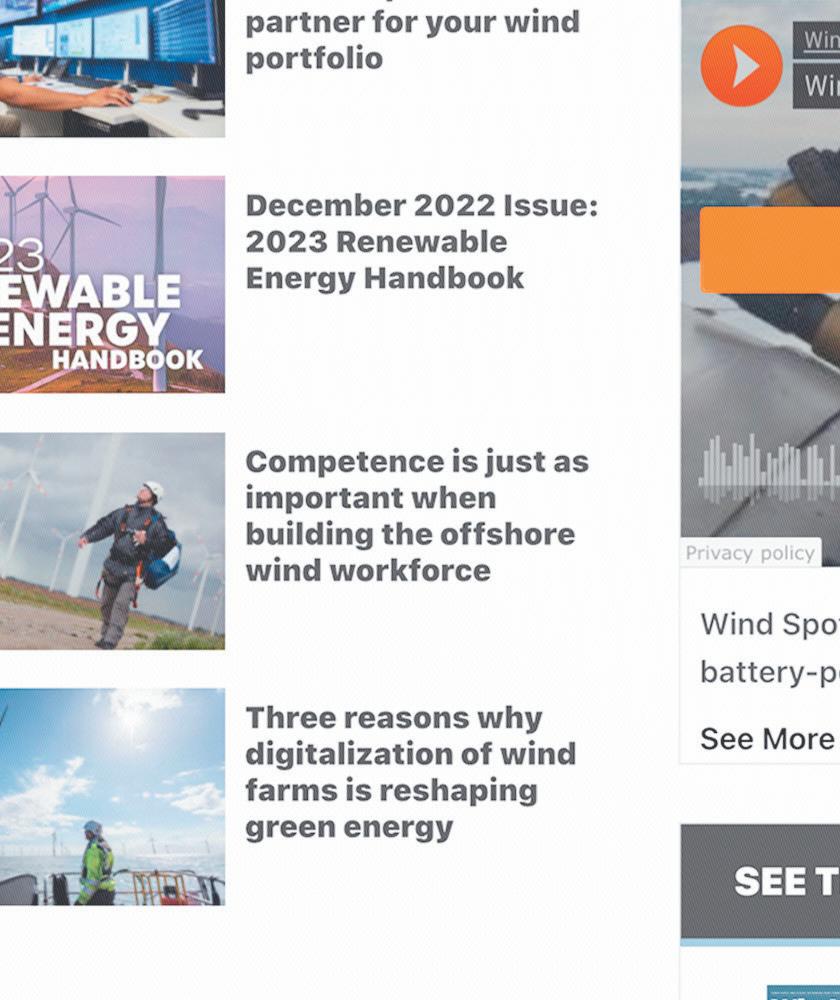


























WWW.WINDPOWERENGINEERING.COM
PUBLISHER
Courtney Nagle cseel@wtwhmedia.com 440.523.1685
EDITORIAL
Editorial Director, Renewables
Kelly Pickerel kpickerel@wtwhmedia.com
Senior Editor
Billy Ludt bludt@wtwhmedia.com
CREATIVE SERVICES & PRINT PRODUCTION

VP of Creative Services

Mark Rook mrook@wtwhmedia.com
Senior Art Director Matthew Claney mclaney@wtwhmedia.com
Art Director Allison Washko awashko@wtwhmedia.com
Senior Graphic Designer Mariel Evans mevans@wtwhmedia.com
Director, Audience Development
Bruce Sprague bsprague@wtwhmedia.com
WTWH Media, LLC
1111 Superior Avenue, Suite 2600, Cleveland, OH 44114
Ph: 888.543.2447
Fax: 888.543.2447
VIDEO SERVICES
Videographer Manager Bradley Voyten bvoyten@wtwhmedia.com
Videographer Garrett McCafferty gmcca erty@wtwhmedia.com
Videographer Kara Singleton ksingleton@wtwhmedia.com
MARKETING
VP of Digital Marketing Virginia Goulding vgoulding@wtwhmedia.com
Digital Marketing Manager Taylor Meade tmeade@wtwhmedia.com
Digital Marketing Coordinator Emily Gillespie egillespie@wtwhmedia.com
Digital Production/ Marketing Designer Samantha King sking@wtwhmedia.com
Marketing Graphic Designer Hannah Bragg hbragg@wtwhmedia.com
Webinar Coordinator Halle Sibly hkirsh@wtwhmedia.com
Webinar Coordinator Kim Dorsey kdorsey@wtwhmedia.com
ONLINE DEVELOPMENT & PRODUCTION
Web Development Manager B. David Miyares dmiyares@wtwhmedia.com
Digital Media Manager Patrick Curran pcurran@wtwhmedia.com
Digital Production Manager Reggie Hall rhall@wtwhmedia.com
Front End Developer Melissa Annand mannand@wtwhmedia.com
Digital Production Specialist Nicole Lender nlender@wtwhmedia.com
Digital Production Specialist Elise Ondak eondak@wtwhmedia.com
IN-PERSON EVENTS
Events Manager
Jennifer Kolasky jkolasky@wtwhmedia.com
Events Manager
Brittany Belko bbelko@wtwhmedia.com
Event Marketing Specialist Olivia Zemanek ozemanek@wtwhmedia.com
CUSTOMER SERVICE
Customer Service Manager Stephanie Hulett shulett@wtwhmedia.com
Customer Service
Representative JoAnn Martin jmartin@wtwhmedia.com
Customer Service
Representative Tracy Powers tpowers@wtwhmedia.com
Customer Service Representative Renee Massey-Linston renee@wtwhmedia.com
Customer Service Representative Trinidy Longgood tlonggood@wtwhmedia.com
FINANCE
Controller Brian Korsberg bkorsberg@wtwhmedia.com
Accounts Receivable Specialist Jamila Milton jmilton@wtwhmedia.com
WINDPOWER ENGINEERING & DEVELOPMENT does not pass judgment on subjects of controversy nor enter into disputes with or between any individuals or organizations.
WINDPOWER ENGINEERING & DEVELOPMENT is also an independent forum for the expression of opinions relevant to industry issues. Letters to the editor and by-lined articles express the views of the author and not necessarily of the publisher or publication. Every e ort is made to provide accurate information. However, the publisher assumes no responsibility for accuracy of submitted advertising and editorial information. Non-commissioned articles and news releases cannot be acknowledged. Unsolicited materials cannot be returned nor will this organization assume responsibility for their care.
WINDPOWER ENGINEERING & DEVELOPMENT does not endorse any products, programs, or services of advertisers or editorial contributors. Copyright© 2023 by WTWH Media, LLC. No part of this publication may be reproduced in any form or by any means, electronic or mechanical, or by recording, or by any information storage or retrieval systems, without written permission from the publisher.
SUBSCRIPTION RATES: Free and controlled circulation to qualified subscribers. Non-qualified persons may subscribe at the following rates: U.S. and possessions, 1 year: $125; 2 years: $200; 3 years $275; Canadian and foreign, 1 year: $195; only U.S. funds are accepted. Single copies $15. Subscriptions are prepaid by check or money orders only.
SUBSCRIBER SERVICES: To order a subscription or change your address, please email: please visit our web site at www.windpowerengineering.com
WINDPOWER ENGINEERING & DEVELOPMENT (ISSN 2163-0593) is published four times per year in February, May, September and a special issue in December by WTWH Media, LLC, 1111 Superior Avenue, Suite 2600, Cleveland, OH 44114. Periodicals postage paid at Cleveland, OH and additional mailing o ces.
POSTMASTER: Send address changes to: Windpower Engineering & Development, 1111 Superior Avenue, Suite 2600, Cleveland, OH 44114





WINDPOWER ENGINEERING & DEVELOPMENT 2 MAY 2023 www.windpowerengineering.com 2011 - 2021 2014 Winner 2014 - 2016 2013 - 2017 asbpe.org BRONZE REGIONAL AWARD 2022
INSIDE
COVER STORY
Cranes cost 50% of wind turbine maintenance expenses. Here’s how to reduce that.
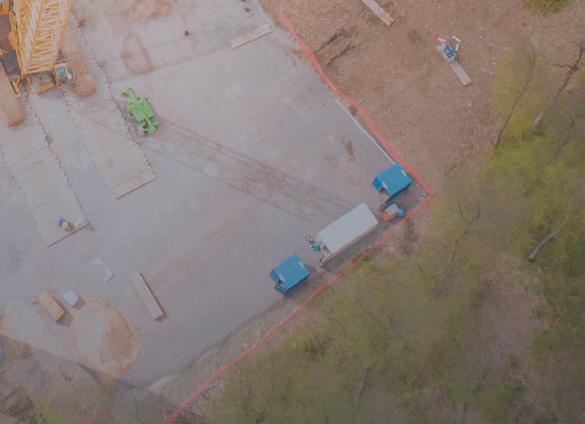



As towers grow to sky-scraping heights, cranes will continue to play an essential role in our clean energy future. Further innovations in positioning and scheduling these cranes, and in training the required labor force, can help control these costs. Cover image: Adobe Stock
IN EVERY ISSUE FEATURES Selecting the right remote operations partner

CONTRIBUTORS WINDWATCH
A selection of product and policy news from our website.
FIND US ONLINE
See the latest wind power developments and U.S. project news as well as expert webinars and more on our website today at WINDPOWERENGINEERING.COM
There are more than 70,000 wind turbines in the United States spread out across over 1,500 projects. The maintenance of a wind power facility can be optimized by working with a remote operations partner.

AI: Wind energy’s paragon and net-zero’s protagonist
Digitalization is a game-changer for wind energy generation, but the overwhelming amount of data being generated needs to be analyzed to ensure turbines perform at peak efficiency and without issue.


What can the U.S. offshore wind market learn from Europe?
Taking cues from Europe, the United States can start out with a better understanding of the challenges involved and avoid common pitfalls like those faced by projects in other parts of the world, ultimately developing a more efficient, sustainable and cost-effective offshore wind industry.
WINDPOWER ENGINEERING & DEVELOPMENT // VOL. 15 NO. 2
WINDPOWER ENGINEERING & DEVELOPMENT 3 MAY 2023 www.windpowerengineering.com
12 04 12 24
05 24 08 18
18
CONTRIBUTORS
WINDPOWER ENGINEERING & DEVELOPMENT
ROB BUDNY is the VP of Sales for Renewable Energy at SparkCognition, where he leads the sales organization for SparkCognition’s Ensemble Asset Performance Management solution for renewable energy operators. Prior to joining SparkCognition, Budny was the COO and cofounder at Ensemble Energy, which was acquired by SparkCognition in May of 2021. He has held several executive positions in organizations including RBB Engineering and Clipper Windpower.
GERRIT VAN DOORNIK is President, Wind Solutions, for Clean Energy Services, founded in 2021 as “a reliable, tech-savvy provider of renewable energy services to large, blue-chip clients as well as smaller upstarts.”
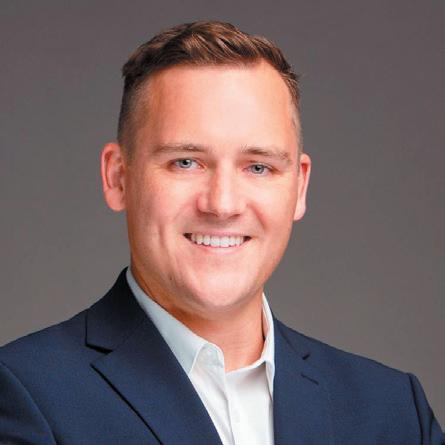
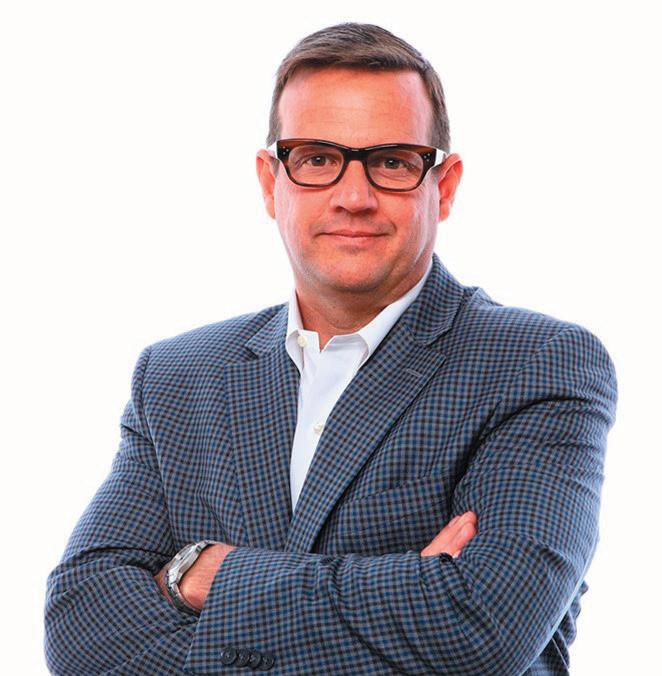
AMY KOMATSUZAKI serves as the VP of remote operations for IHI Power Services Corp and brings to her role over 20 years of experience related to business development, sales and consulting.
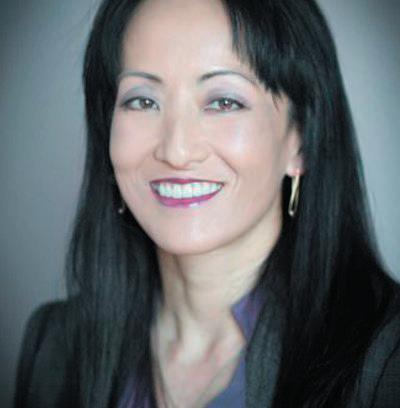
ANDY MALPAS is Kent’s Offshore Wind Market Director for the United States. Based in Boston, Andy is an experienced chartered engineer with a proven track record leading projects and teams in the offshore wind and energy industries. He is a strong engineering professional skilled in engineering management, project management, operations management and has a technical focus in the area of fracture mechanics and integrity management.

WINDPOWER ENGINEERING & DEVELOPMENT 4 MAY 2023 www.windpowerengineering.com
MAY 2023
ROB BUDNY
AMY KOMATSUZAKI
GERRIT VAN DOORNIK ANDY MALPAS
WIND WATCH





Colorado will soon be home to the world’s largest wind turbine tower factory
CS Wind is expanding its manufacturing plant in Pueblo, Colorado, to double production of its wind turbine towers to 10,000 annually. Increasing production means CS Wind will hire at least 850 new employees. The factory will be expanded by 90,000 sq. ft, making it the world’s largest manufacturing plant for wind turbine towers. The


first phase of the new facility is expected to be complete by summer 2024, with the following two phases expected to be complete by 2028. The manufacturing plant will operate 24 hours a day, seven days per week. Burns & McDonnell is designing and constructing the expanded facility and will also assist with environmental permitting.

WINDPOWER ENGINEERING & DEVELOPMENT 5 MAY 2023
WINDPOWER ENGINEERING & DEVELOPMENT MAY 2023 WHAT’S
NEW
CS WIND
WIND WATCH
WHAT’S NEW CONTINUED
Offshore wind developer invests in New York workforce
Leading Light Wind, an offshore wind project slated for the New York Bight, is investing in three initiatives to boost regional offshore wind workforce development. The first is creating offshore wind curriculum to incorporate into existing coursework at CUNY College of Staten Island. The second is a scholarship program for local college students to attend renewable energy conferences with the goal of engaging younger people in the renewable energy career pipeline. The last initiative is supporting turbine pre-assembly at the proposed Arthur Kill Terminal manufacturing facility in Richmond Valley. Leading Light hopes to revitalize a working waterfront and create new jobs in Staten Island.
Offshore wind development opens in Gulf of Mexico
The Dept. of the Interior proposed the first offshore wind lease sale in the Gulf of Mexico in February. The proposed lease areas are 102,480 acres offshore from Lake Charles, Louisiana, and two plots that are 102,480 acres and 96,786 acres offshore from Galveston, Texas. When developed, these lease areas have the offshore wind potential to power 1.3 million homes. This is the third offshore wind lease auction the Biden-Harris Administration has initiated — the first off New York and second off California — and has plans to explore offshore development in Oregon, the Gulf of Maine and Central Atlantic.
Report published on
DOI aims to fast-track offshore wind development
The Dept. of the Interior’s Bureau of Ocean Energy Management is proposing a rule update to regulations for developing clean energy projects in the U.S. Outer Continental Shelf. The goal is to streamline renewable energy project development, including offshore wind, in this territory. BOEM is considering changes for survey requirements, project design verifications, renewable energy auction regulations, safety management regulations and other processes it considers “overly complex and burdensome.” These proposed updates have been considered from the BOEM’s experience of conducting 11 auctions and 27 active commercial leases for clean energy developments.
2 offshore wind port projects planned for New York
Attentive Energy One, a joint venture between TotalEnergies and Rise Light & Power, announced plans in March to construct two offshore wind port facilities in New York Harbor. A lease agreement was entered for the Arthur Kill Terminal, which will be the first wind turbine marshaling facility in the state. AKT is expected to create 435 jobs, in addition to hundreds of construction jobs building the port. Attentive Energy also has plans to develop an O&M facility at the Ravenswood Generating Station in Queens. If built, the hub will have control rooms, training facilities and warehousing for AE1 projects.
Maine’s offshore wind potential
DNV completed a series of reports analyzing offshore wind development potential off the coast of Maine. The reports found offshore wind development could create up to 33,000 jobs in near-term development, with potential wage earnings of $2 billion; and electricity generated by offshore wind could make Maine meet its
decarbonization goals. Maine’s coastline experiences some of the highest average wind speeds in the United States, but DNV said it has more complex development considerations than other East Coast locations, due to water depths and existing marine industries.
WINDPOWER ENGINEERING & DEVELOPMENT 6 MAY 2023 www.windpowerengineering.com
DOE offers $30 million to fund more efficient wind turbine manufacturing
The U.S. Dept. of Energy has offered $30 million in funding to advance domestic manufacturing of materials used to help wind turbines produce power more efficiently and cost-effectively. By using lightweight composite materials in turbine production, manufacturers can theoretically reduce emissions, increase the efficiency of wind power generation and make shipping these components simpler by reducing their weight. The Office of Energy Efficiency and Renewable Energy is seeking streamlining the process specifically in additive manufacturing processes for rapid prototyping, tooling, fabrication and testing large wind turbine blades.
Offshore wind business incubator opens in New York
The Offshore Wind Innovation Hub, a Brooklyn, New York-based business incubator, opened its doors in January and is accepting applications for startups focused on advancing the U.S. offshore wind industry. The three-year initiative is supported by Equinor and bp, the companies developing the Empire Wind and Beacon Wind offshore wind projects, and the Urban Future Lab, the NYU Tandon School of Engineering and the National Offshore Wind research and Development Consortium. Offshore wind startups will have access to co-working space and programming through a six-month mentoring and business development program starting in June 2023. OWIH is also offering memberships to stakeholders outside of its Accelerator Program.
Wisconsin utility commissions 92-MW wind farm
Utility company Madison Gas & Electric completed construction of the 92-MW Red Barn Wind Farm in Grant County, Wisconsin. Red Barn is composed of 28 turbines built across 10,000 acres, and is expected to generate enough energy to serve about 50,000 households. The wind farm is contributing to MGE’s carbon reduction goal to achieve net-zero carbon electricity by 2050.
Coalition develops wind technician training program in Texas
O&M provider Clean Energy Services has partnered with the Texas Workforce Commission Skills Development Fund, Houston Community College and Renewable Training Academy to develop a training program in Houston to help veterans and other job seekers to find a career in the energy transition. Renewable Training Academy will provide foundational support for careers like wind technicians, offering introductory courses on turbine operations. The U.S. Bureau of Labor Statistics projects a 44% growth of wind turbine technician jobs between 2021 and 2031, and it was the fastest growing job segment in the country in 2022.
Siemens Gamesa considers New York for offshore wind factory
Siemens Gamesa intends to build an offshore nacelle factory in New York if the company’s wind turbines are selected for the state’s third offshore wind project solicitation. The proposed facility would be built at the Port of Coeymans, near Albany, and create approximately 420 permanent jobs and a $500 million investment in the region. The proposed facility would produce components to serve Siemens Gamesa offshore wind projects along the East Coast. Siemens Gamesa is also committing to localizing several new component supplier facilities, including steel fabrication, bearings and composite components.

WHAT’S NEW CONTINUED
WINDPOWER ENGINEERING & DEVELOPMENT 7 MAY 2023
CRANES COST 50% OF MAINTENANCE

WIND TURBINE EXPENSES





 BY GERRIT VAN DOORNIK • PRESIDENT OF WIND SOLUTIONS • CLEAN ENERGY SERVICES
BY GERRIT VAN DOORNIK • PRESIDENT OF WIND SOLUTIONS • CLEAN ENERGY SERVICES






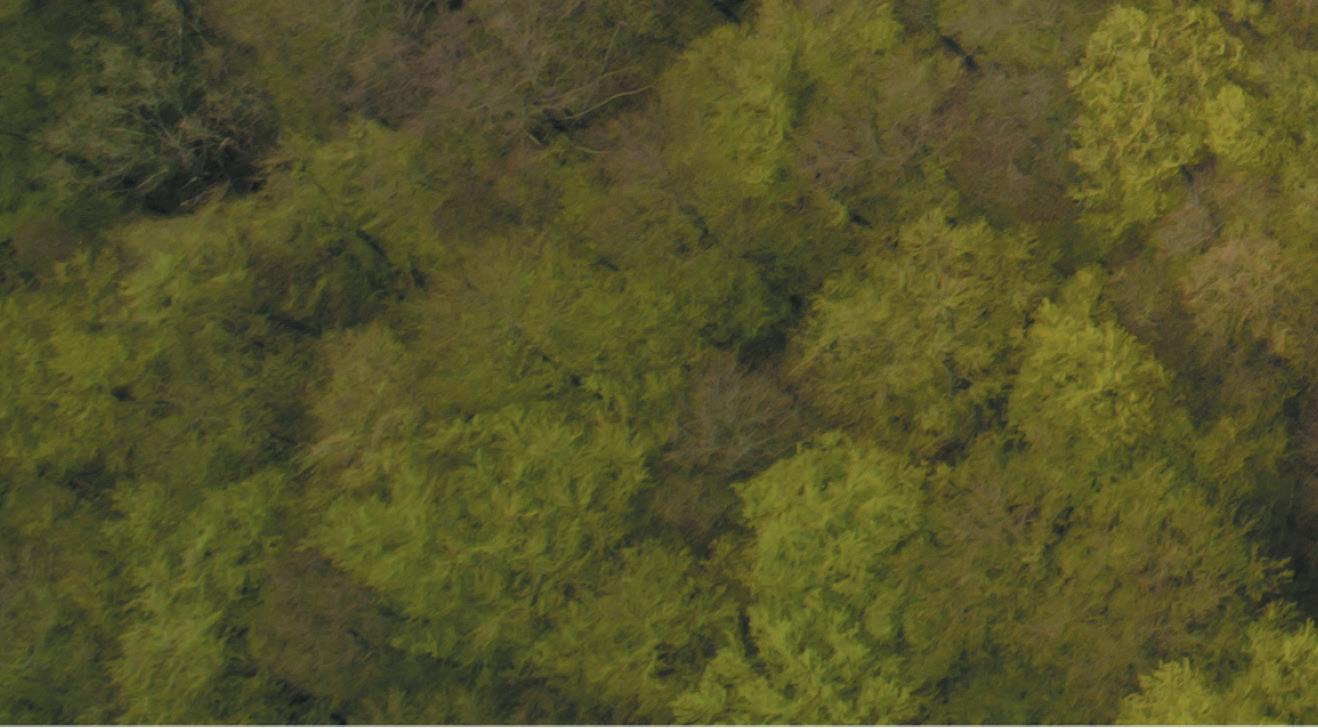
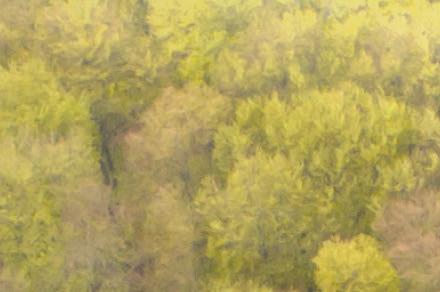



8 MAY 2023 & DEVELOPMENT www.windpowerengineering.com
since its invention to lift water for irrigation 5,000 years ago in Mesopotamia, the crane has been essential for lifting and moving heavy loads. The Roman empire added treadwheels so a single person could lift thousands of pounds. The first hydraulic-powered crane dates back to 1838. Now a wide variety of cranes allow many of the things we take for granted modern society — the type depends on the weight being lifted, the height it needs to be lifted to, and how long the crane will remain in
a place.
Fixed tower cranes allow the construction of immense skyscrapers. Robotic industrial cranes move products and equipment during manufacturing processes. Horizontal gantry cranes lift and lay sections of bridges and overpasses on highways and load and unload massive container ships at ports.
In wind energy, several styles of mobile cranes are used, including crawler cranes, all-terrain truck-mounted cranes and floating cranes for offshore installations. Recently, purpose-built wind turbine assembly cranes have begun to enter the market, hoisting themselves to the top of wind towers and then lifting the



turbine components into place.
cranes will continue to play an essential role in our clean energy future. Crane equipment and labor costs make up anywhere from innovations
As turbines proliferate and towers grow to sky-scraping heights, cranes will continue to play an essential role in our clean energy future. Crane equipment and labor costs make up anywhere from 30 to 50% of the cost of turbine maintenance. Further innovatio in positioning and scheduling these cranes, and in training the required labor force, can help control these costs.
Two of the primary costs of crane operation are transportation and downtime. Cranes can be as large as the towers they erect and, depending on the type, must be dismantled for transportation from site to site. A single day’s rental can cost anywhere from $10,000 to $50,000, depending on the size required.
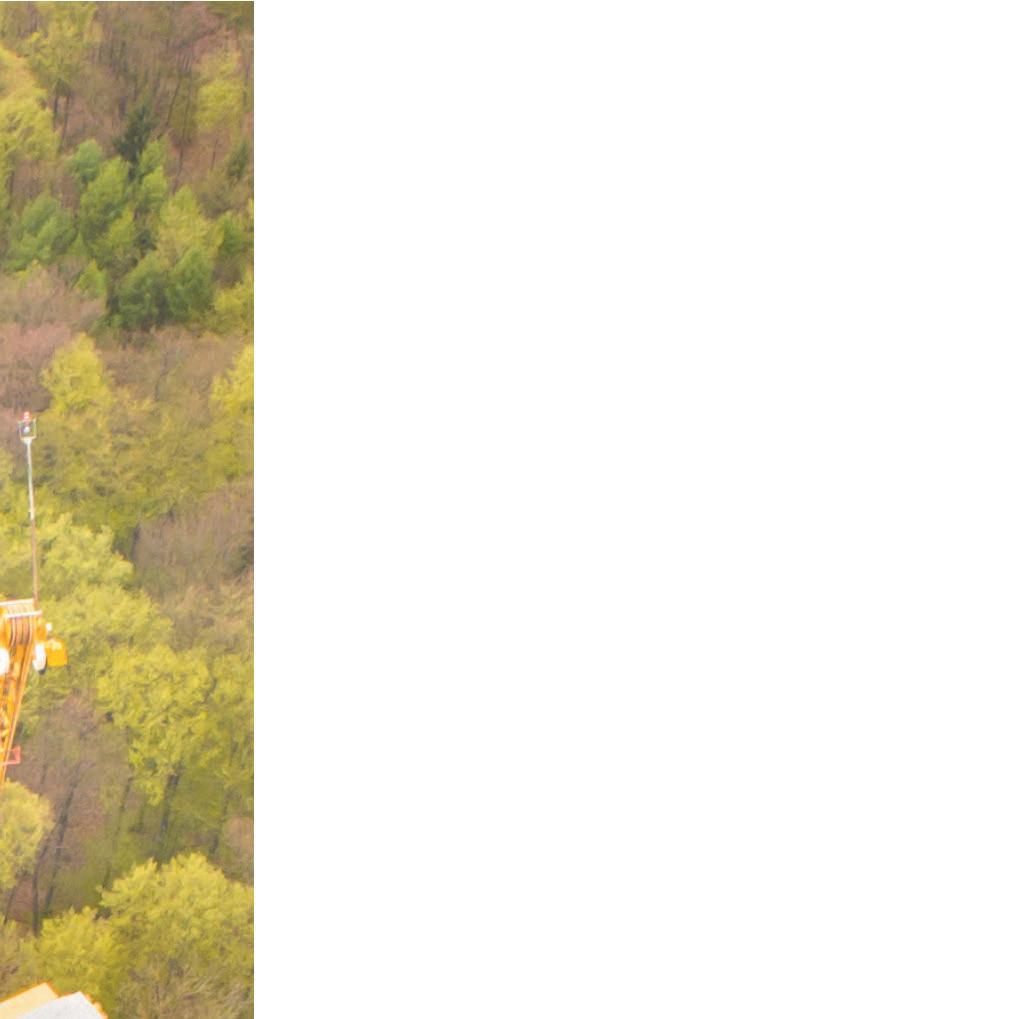

Transporting a crane to the site typically requires 20 or more truckloads. Each truck can move a load about 600 miles a day, or multiple loads over a shorter distance. If a crane needs to mov miles, it would likely need a truck to move two to three loads in a day. Mobilization cost can be almost 50% of overall crane cost for a
single turbine repair.
Economies of scale and careful planning can help to solve this problem. Say a turbine needs major maintenance every five years, on average, and the maintenance cycle lasts one week. If used efficiently, a single crane could theoretically maintain 52 turbines per year, or 260 turbines over five years. When large numbers of turbines — 150 to 200+ — are located close together, a crane can be dedicated full-time to that site, cutting down dramatically
on average, and the maintenance cycle lasts one week. If used on relocation costs.






On-site labor downtime can add up as well. Once the crane is delivered, it takes a few days to set it up, depending on crane type. When maintenance tasks are completed, it takes another couple


delivered, it takes a few days to set it up, depending on crane type.

WINDPOWER ENGINEERING in
even
move 100
& DEVELOPMENT 9 MAY 2023
days to dismantle and prepare for loading onto trucks to start the process again.
The crane team and turbine technician team work on different scopes. Whenever the crane is being assembled, moved or disassembled, the tech team is idle and more crane personnel are needed. Once the crane is ready to work, the technicians are working but fewer people are needed on the crane side. This leads to inefficiencies on both teams; up to 40% of labor costs can come from idle time.
Cross-training technicians to be proficient in both crane operation and wind turbine maintenance can be an effective way to reduce costs and improve the efficiency of the entire process. By eliminating the need for separate technicians for each task, companies can save significantly on recruiting and reduce the number of personnel on site.
In addition to the direct savings, cross-training can also improve the overall
O&M Cost per Turbine (annually)
efficiency of the maintenance process. Having technicians familiar with both cranes and wind turbine communication and coordination can streamline the work and further reduce downtime. And for the wind turbine owner, this makes the process far easier, as a single contractor can complete each element of the turbine maintenance process.
However, cross-training technicians can be a significant undertaking, as it requires time and resources to provide the necessary education and ensure that technicians are proficient in both areas. Investments in additional equipment and training materials may be needed. Clean Energy Services has achieved this in the short term by developing an in-house cross-training program. For the longer term, CES has partnered with Houston Community College to develop courses in crane operations and turbine maintenance, ensuring a consistent pipeline of skilled labor.
Despite these challenges, the cost savings and efficiency improvements make cross-training crane teams a potentially worthwhile investment for companies involved in wind turbine maintenance, on top of the savings to be found for the cranes themselves. WPE
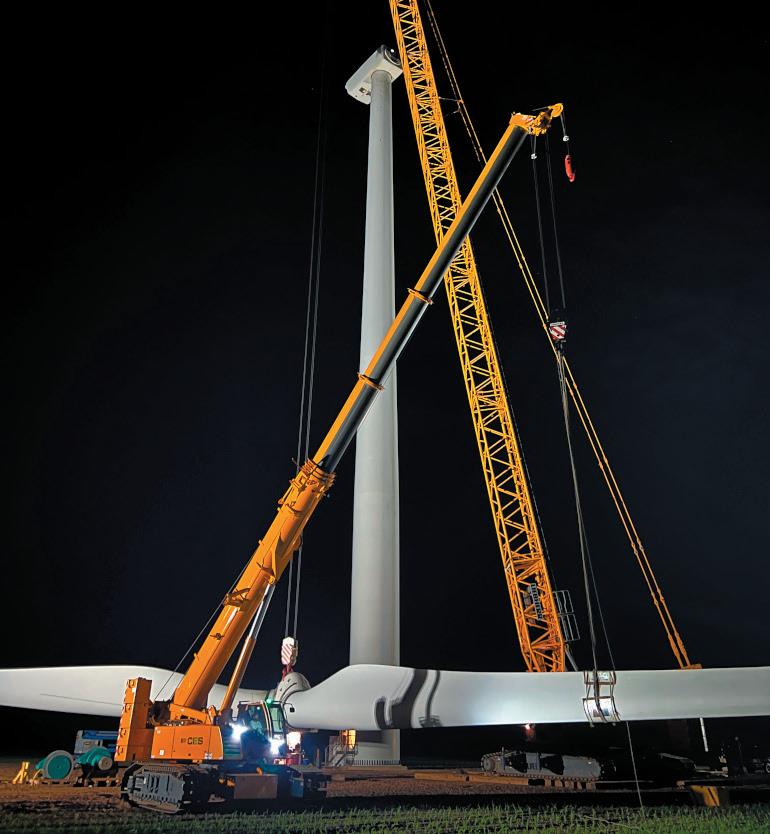
REDUCING CRANE MAINTENANCE COSTS WINDPOWER ENGINEERING & DEVELOPMENT 10 MAY 2023 www.windpowerengineering.com
Year 1-5 Year 6-10 Year 11-15 Year 16+ Site Maintenance 2.0% 1.1% 0.8% 0.7% Wage-based Labor 21.0% 14.9% 13.5% 13.4% Salaried Labor 29.0% 16.8% 12.0% 10.3% Consumables 13.0% 7.5% 5.4% 4.6% Parts Replacement (including crane) 35.1% 59.7% 68.2% 71.1% 120% 100% 80% 60% 40%
20% 0%
Custom content in a live, interactive or on-demand format































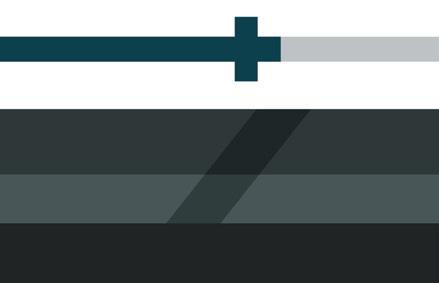

























WTWH Media's webinars offer:
- Coverage of a wide range of topics














- Help engineers better understand technology or product related issues and challenges






- Present educational material related to specific topics

WWW.WINDPOWERENGINEERING.COM/WINDPOWER-ENGINEERING-WEBINARS WTWH MEDIA LLC | WEBINAR SERIES

WINDPOWER ENGINEERING & DEVELOPMENT 12 MAY 2023 www.windpowerengineering.com
SELECTING THE RIGHT REMOTE OPERATIONS PARTNER FOR YOUR WIND PORTFOLIO





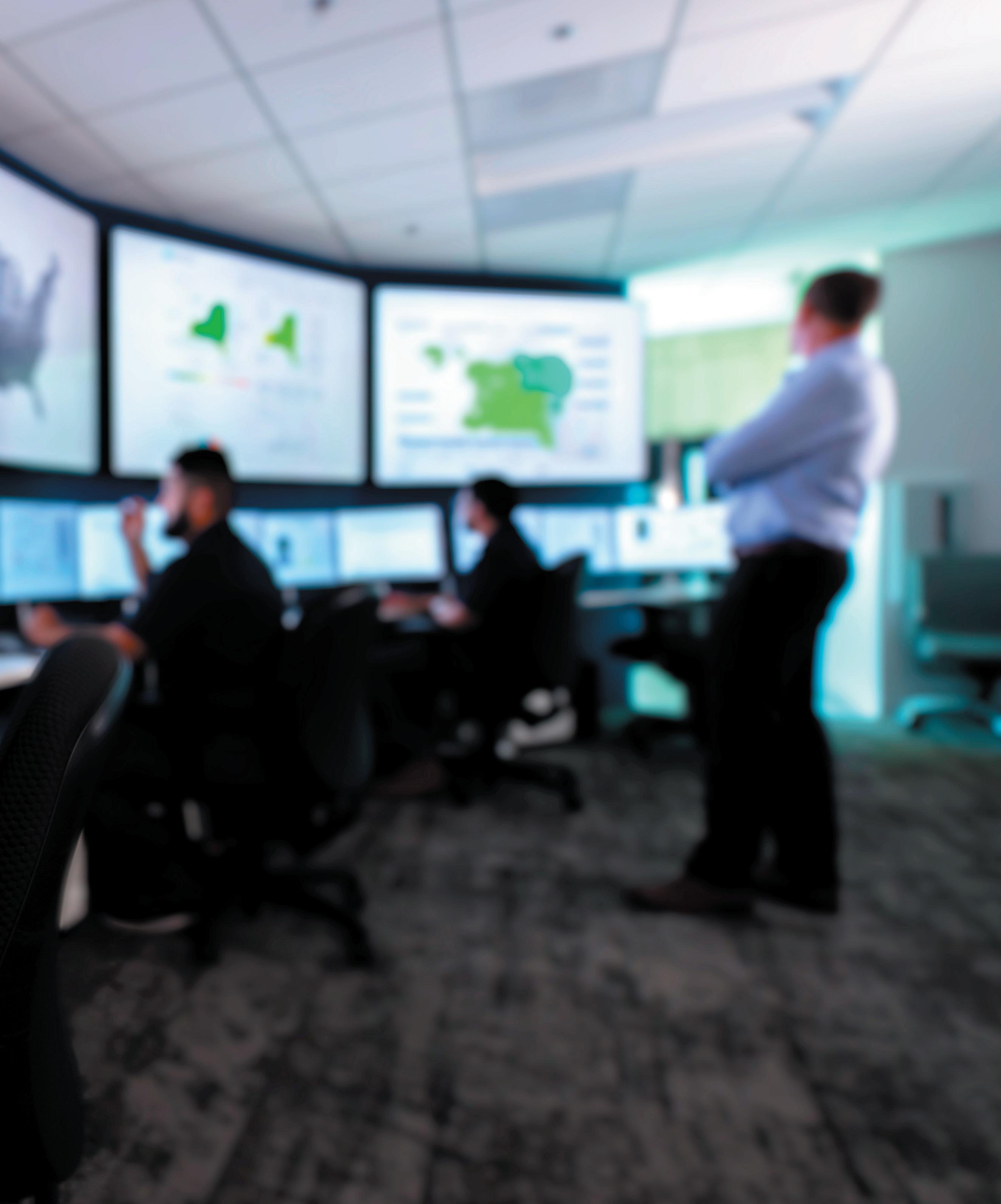 BY AMY KOMATSUZAKI • VP OF REMOTE OPERATIONS • IHI POWER SERVICES CORP.
BY AMY KOMATSUZAKI • VP OF REMOTE OPERATIONS • IHI POWER SERVICES CORP.







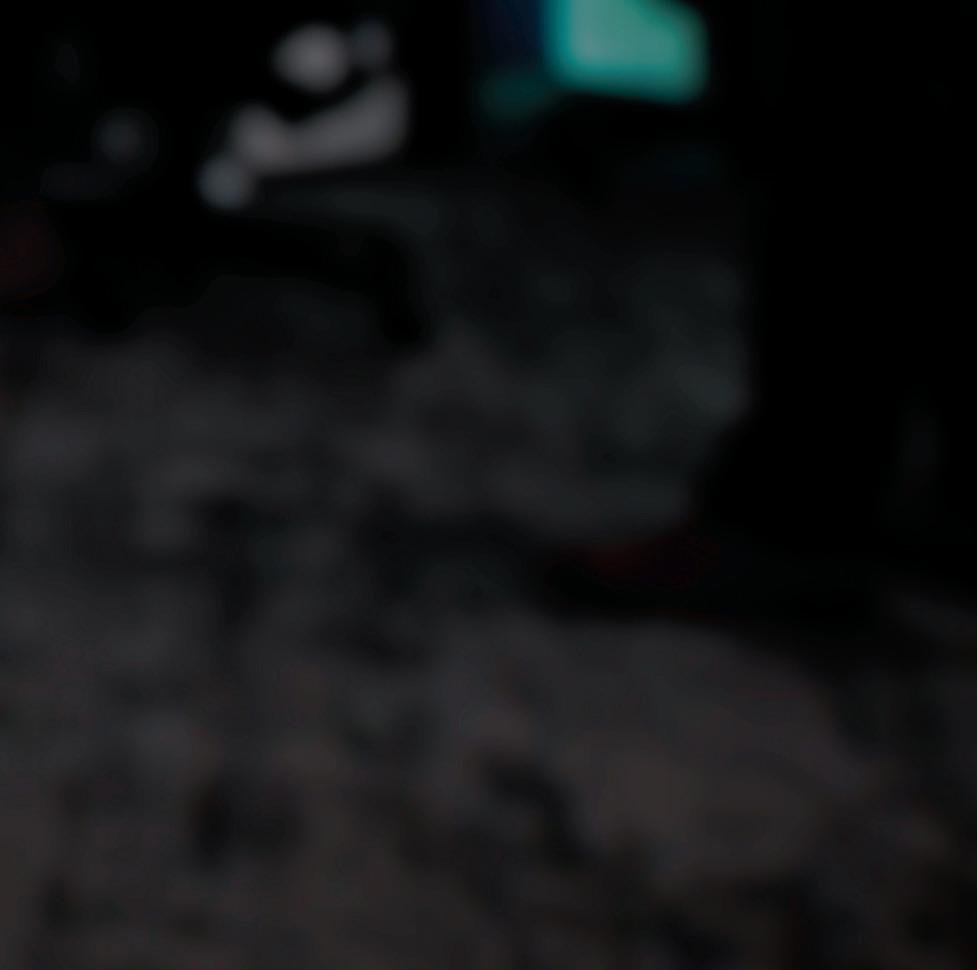
WIND power generation
represents a growing segment of power globally and in the United States. From 2000 to 2021, the amount of wind power generated in the United States grew from 5.59 terawatt hours to 379.77 terawatt hours. The renewed emphasis on green energy and the elimination of the dependence on fossil fuels promises to increase the rate of growth even further.
There are currently more than 70,000 wind turbines in the United States spread out across over 1,500 projects. Some of these projects are small in scope and may consist of a handful of turbines. In other cases, the construction of large wind farms are supplying electricity to
thousands of consumers. While the type of wind power projects in the United States may differ significantly, they all share some common characteristics. Each of these projects and turbines needs to be managed effectively to ensure their safety, economic viability and consistent power generation. Wind power installations require preventative maintenance to keep equipment running efficiently. They may also need emergency repairs to address unexpected damage that can affect their ability to produce power.
In many instances, the management and maintenance of a wind power facility can be optimized by working with a remote operations partner.
Typical challenges faced by wind sites
Wind power has become one of the leading alternatives to fossil fuels to generate electricity, but companies producing electricity with wind power typically face several challenges.
• Wind power is intermittent

- There is no guarantee that a specific wind turbine will have the necessary wind to power it at any given time. The inconsistent and unpredictable nature of the wind makes it necessary for batteries or other forms of energy storage to be implemented to ensure power continues to be delivered even when the turbines are not spinning.


• Wind energy is remote - Turbines



WINDPOWER ENGINEERING & DEVELOPMENT 13 MAY
2023
and generation sites are often located in remote areas to take advantage of prevailing winds. They may be a significant distance from the locations to which they deliver electricity. This necessitates the construction, management and maintenance of transmission lines to get power from generation sites to the population they support.
• Wind turbines are susceptible to mechanical failure - The harsh demands on essential turbine components like gearboxes make them prone to potential mechanical failures. This affects the ability of the generating company to meet its expected output and can require expensive and time-consuming repairs that need to be performed promptly.
• Turbine components wear out at different rates - Turbulent wind conditions can result in irregular
loading input and wear on turbine components. It can be difficult to predict the lifetime of key components to ensure consistent power delivery and avoid unexpected outages.
The benefits of working with a remote operations partner
For a variety of reasons, wind power companies may need outside assistance to operate their production facilities efficiently. A remote operations partner can help augment a wind power generating company’s staff and provide the knowledge, technical expertise and personnel necessary to maintain the project.
Typically, a remote partner works from a remote operations center from which they can monitor and manage multiple wind power facilities. Remote operation centers (ROCs) promote environmental safety and are essential in moving toward
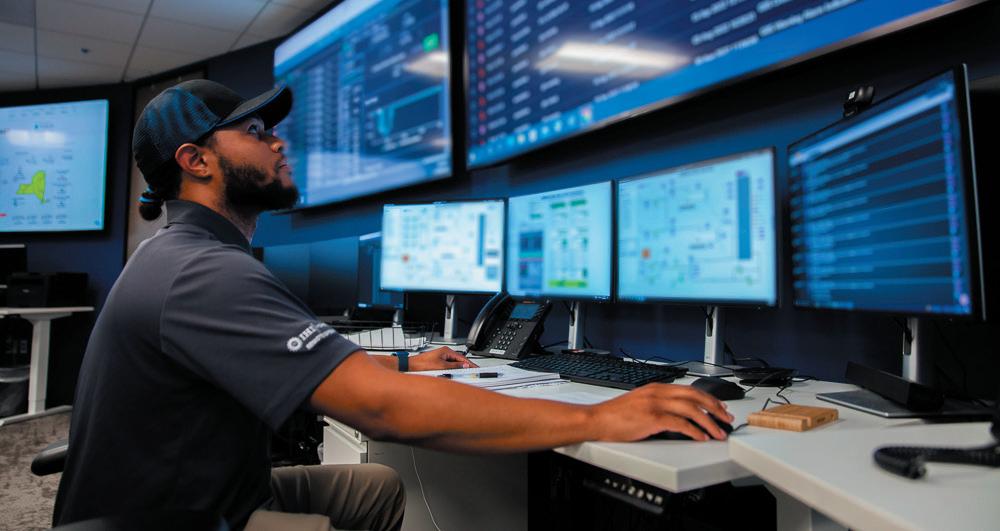
a future more dependent on wind power. The remote and distributed nature of wind generating facilities can lead to operational inefficiencies or be logistically impossible to operate with traditional onsite management techniques.
Multiple advantages can be achieved by wind power companies working with a remote operations partner.
• Addressing staffing shortages - An ROC can handle plant operations and free-up onsite staff to concentrate on maintenance to ensure availability and consistent power generation. This is especially important in some areas of the country where there is difficulty recruiting a suitable workforce.
• Minimizing operational risk - The expertise of the technical staff of an ROC can help keep the facility running safely and in compliance with all regulatory standards. It’s important to work with an ROC that has worked in the specific type of power
SELECTING THE RIGHT REMOTE OPERATIONS PARTNER
WINDPOWER ENGINEERING & DEVELOPMENT 14 MAY 2023 www.windpowerengineering.com
generation that is being managed. Personnel should have knowledge and experience with wind power and battery-based energy storage systems to ensure safety and efficiency.
• Increasing efficiency and productivitySupervisory control and data acquisition (SCADA) systems are used extensively throughout the power generation industry to monitor and control plants and equipment. In a distributed implementation of a wind power installation, this can result in multiple SCADA platforms that need to be managed simultaneously. An ROC can consolidate these SCADAs into a centralized humanmachine interface (HMI) for more efficient monitoring and increased productivity.
• Providing a mobile technical teamTechnical experts can be centrally dispatched from a remote operations center in response to issues that impact remote wind power generating installations and equipment. This is a cost-effective alternative to attempting to maintain full onsite support for distributed and remote facilities.
These benefits lead to a more efficient and cost-effective method of remotely operating wind power projects.
Factors contributing to a successful remote operations center
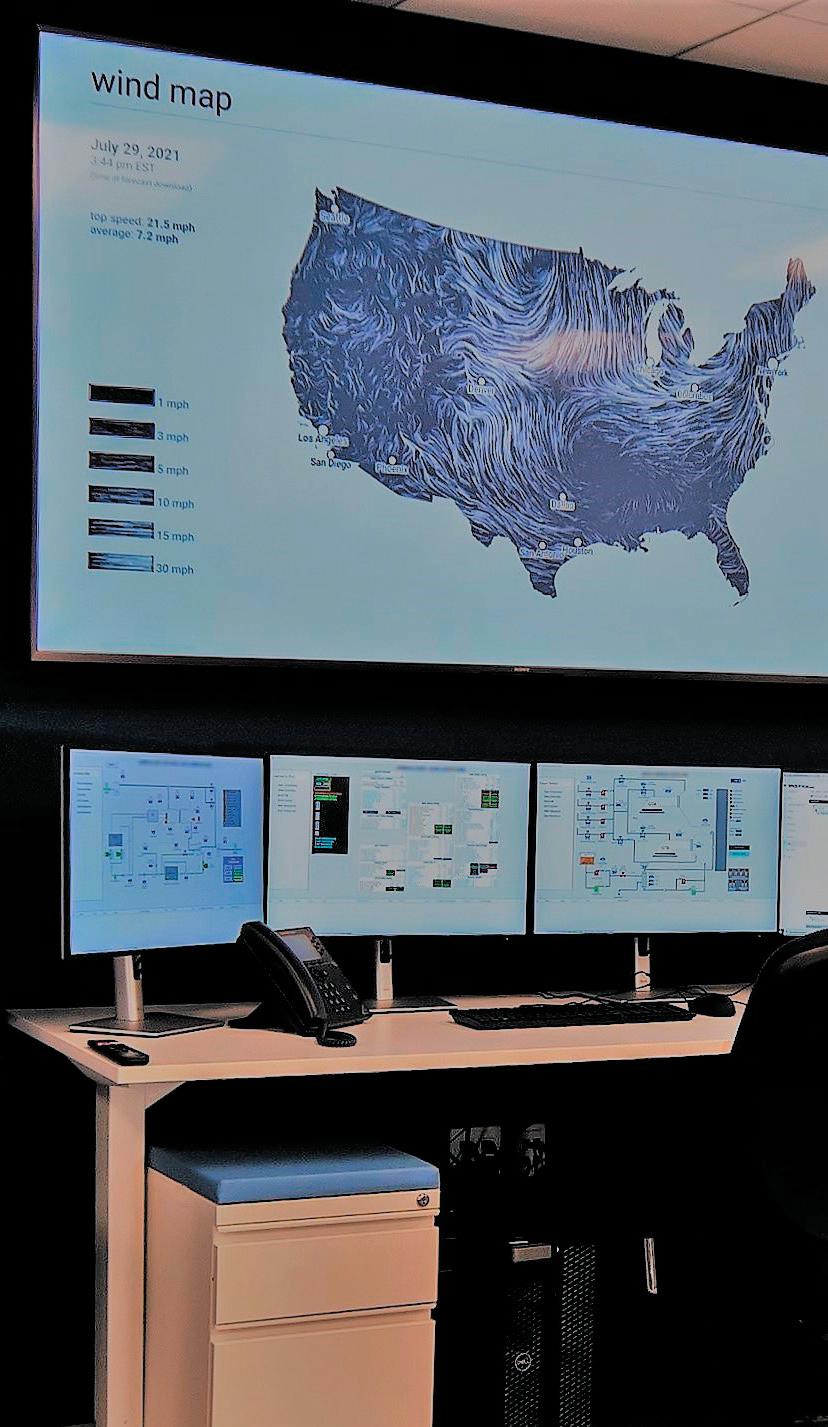
Businesses in the wind power industry need to ensure they have the appropriate infrastructure and technology base in place to support the requirements of the remote operations center. Some of the most important prerequisites that should be driven by a formal execution plan include:
• Implementing reliable and redundant communication systems that promote the timely exchange of knowledge regarding plant and equipment status;
• Improving Internet and network connectivity;
• Enhancing cybersecurity to ensure safe operation and data security;
• Ensuring access to SCADA data points so they can be consolidated.
SELECTING THE RIGHT REMOTE OPERATIONS PARTNER WINDPOWER ENGINEERING & DEVELOPMENT 15 MAY 2023
How to select the right remote operations partner
Wind power generating companies need to exercise caution when selecting a remote operations partner. With the proper infrastructure and technology in place, the following are some of the key questions that should be considered when selecting the right partner.
What is the provider’s level of experience?
The chosen provider should have proven operational experience in wind power generation. The partner responsible for operating and managing wind power facilities must be dedicated to the plant’s success and familiar with all necessary operational requirements. Companies being considered as the ROC provider for a wind power generating facility need to be knowledgeable about North American Electric Reliability Corporation and NERC compliance.
What types of technology will be used? Multiple questions must be asked regarding the technology used by the remote operation’s center provider, including:
• How are native SCADA systems integrated into the remote operations center?

• What level of automation is used?
• How are alerts handled to reduce false alarms?
• Will remote “eyes on site” capabilities be available for off-hour monitoring?
• What kind of weather reporting capability is provided to assist with operational planning?
What operation and maintenance services are o ered?
Operation and maintenance should be flexible and reflect site-specific requirements. Comprehensive O&M services should include:
• Complete services with 24x7 O&M outsourcing, programs to promote worker health and safety and management of major maintenance activities;
• Customized training programs and operations procedures;
• Creating preventative maintenance plans, procedures and schedules;
• Project management to assist in implementing the remote operations center and subsequent activities;
• Instrument calibration and upgrades;
• Staffing to address skills gaps and shortages;
• Financial reporting and administration.
Does the provider o er service levels tiers?
Many ROC providers offer tiered service levels to address the needs of specific wind power installations and projects.
WINDPOWER ENGINEERING & DEVELOPMENT 16 MAY 2023 www.windpowerengineering.com
SELECTING THE RIGHT REMOTE OPERATIONS PARTNER
Some companies may only need a small subset of the provider’s offerings and be reluctant to pay for any additional services. Look for a provider that can tailor its plans to the unique requirements of your wind power company. The provider should offer a scalable remote operations center solution that can handle business growth as wind power continues to gain popularity.

Red flags to look for

The following red flags should be taken seriously when searching for a remote operations partner.
• Inexperience with the wind power sector;
• Inflexible scope of work that does not offer the required services;
• No formalized plans for addressing sitespecific requirements;
• An unscalable control room that cannot address plant growth;
• Ineffective alarm filtering that results in excessive warnings and false alerts.
• If any of these issues are apparent, the search for a remote operations partner should continue and this particular candidate should be eliminated from consideration.
Conclusion
As wind power continues to expand and more remote installations are incorporated into the grid, the need to work with a qualified remote operations partner will also increase. The ability to effectively operate and manage wind power equipment remotely is critical to its long-term success as an alternative source of electricity so it’s important to find the right partner that addresses your unique needs.
Look for a flexible provider with experience in the wind power field that will work with you to optimize your company’s generating capacity while maintaining compliance and minimizing costs. With the right remote operations partner, there’s no limit to how far your wind power facility can grow. WPE
Offering Bolting O&M Services Wherever You Need It
Aztec offers complete bolting tool repair, torque wrench calibration services and maintenance. We have a fleet of bolting service vans driven by skilled technicians ready to get your tools up and running anywhere, anytime. All our equipment is available to rent, lease-to-own and buy so you can be ready for the job ahead.

Aztec Carries the Fast and Precise
Norbar EvoTorque Battery Tool

• Highly versatile, with storage for various units of torque measurement and multiple custom modes

• Smart data management, including some of the latest data transfer, storage and management tools
• Fast application, ability to check for tightness and to undo bolts as needed

• Portable model for job site flexibility
• Six sizes are available (1-1/4” to 2-1/2”) to fit wind industry needs

• 225,000 lbs preload capacity: 225,000 lbs, and you can upgrade it to 450,000 lbs (2,000 Kn)
We also carry some of the most sophisticated bolting products from other leading brands, including:


• Stahlwille tightening tools

• Enerpac W-Series
| Find Your Testing Solution

Over 70 years ago, the bolt tension calibrator was founded by Skidmore-Wilhelm. Since then, they’ve been the go-to brand for calibration and testing units, with the best technology for today’s demands.
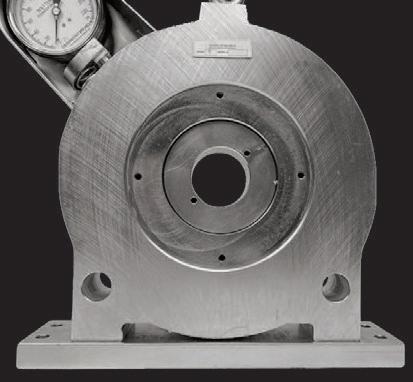
SELECTING THE RIGHT REMOTE OPERATIONS PARTNER WINDPOWER ENGINEERING & DEVELOPMENT 17
aztecbolting.com 520 Dallas St. League City, TX 77573 24/7 Service - Call Us 832-271-5120 NO-LIMIT BOLTING SOLUTIONS FOR A NO-LIMIt INDUSTRY
Support With the Model K Bolt-Tension Calibrator
Reliable
WIND ENERGY’S PARAGON & NET-ZERO’S PROTAGONIST
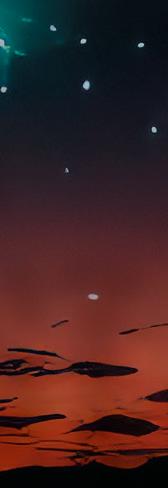


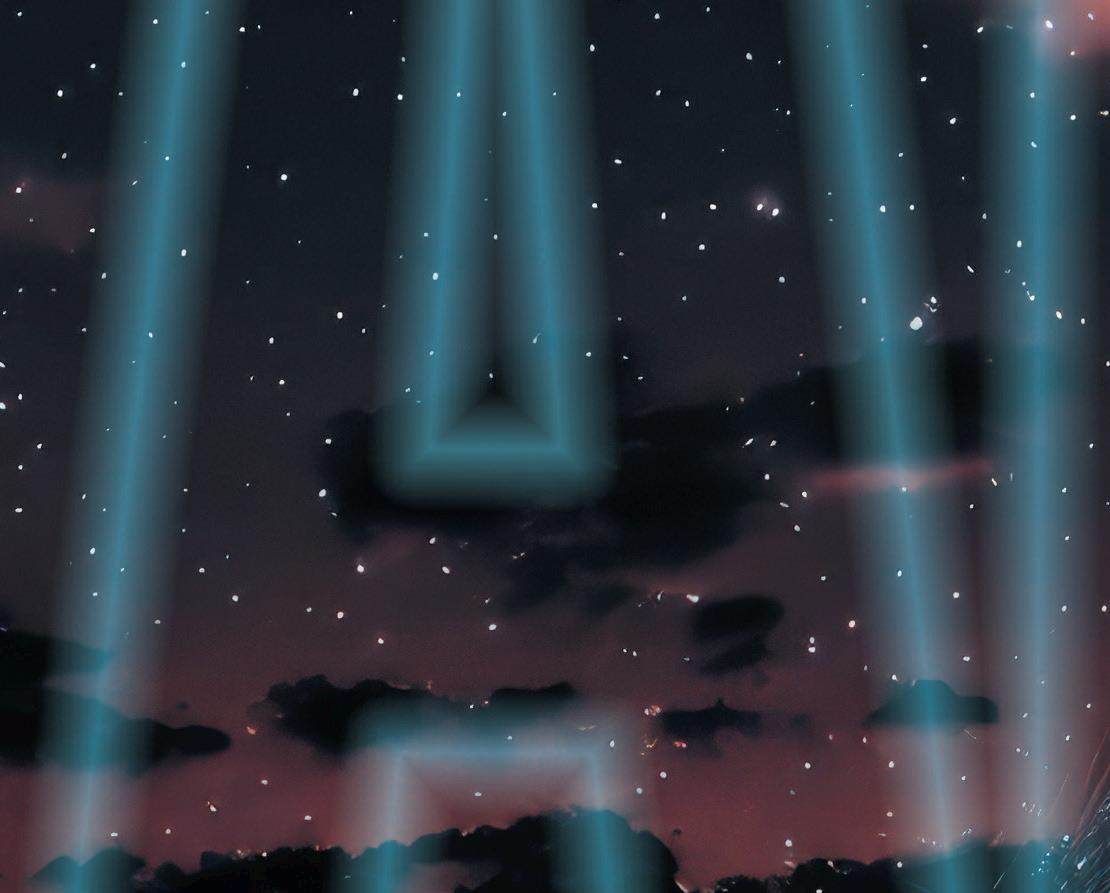





 BY ROB BUDNY • VP OF RENEWABLES • SPARKCOGNITION
BY ROB BUDNY • VP OF RENEWABLES • SPARKCOGNITION
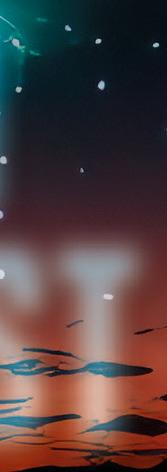


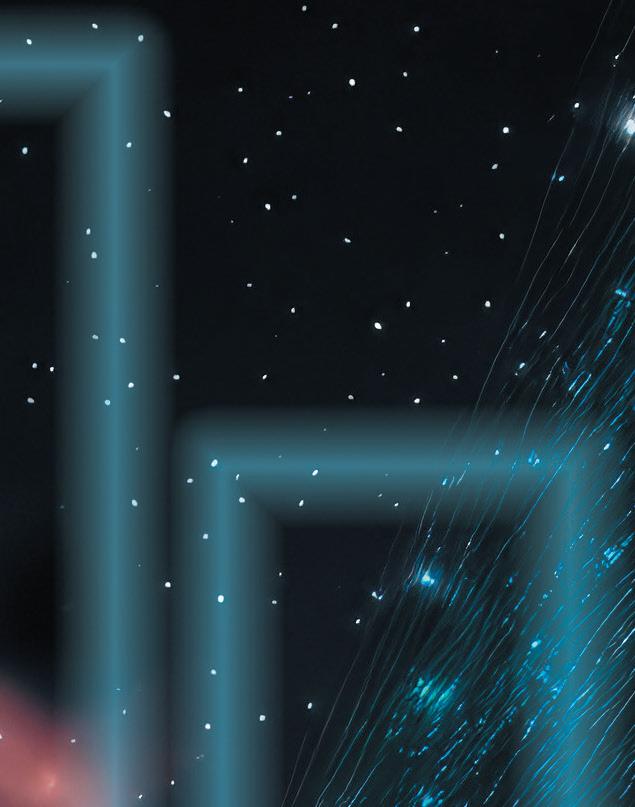



WINDPOWER ENGINEERING & DEVELOPMENT 18 MAY 2023 www.windpowerengineering.com
THERussian invasion of Ukraine exposed the starkest challenges of fossil fuel dependence on a global level. The volatility of record-high power and fuel prices rocked economies and consumers while global CO2 emissions soared to a historic high and put the goals of the Paris Agreement at risk. A growing number of countries, regions and individual organizations are making carbon neutrality an overriding priority by taking decisive and urgent actions to accelerate the deployment of renewables to ease economic pains, lower costs and put the world on the yellow brick road to net zero.
Within the net-zero ruminations and subsequent actions, wind energy is the dominant player in the renewable
decision-making process today. In the United States, wind outpaced coal in 2019 in the amount of energy provided and is now the country’s largest renewable energy source. The global offshore wind sector realized a banner year for deployments in 2021, with 17,398 MW of new projects commissioned, pushing the global installed offshore capacity past 50 GW. According to the Global Wind Report, 2022 was another strong year for wind installations, with 94 GW installed around the world. To stay on track with global net-zero goals, installations will need to add 180 GW per year effective immediately to maintain climate change to less than 2° C, and 289 GW at the start of 2030 to meet 2050 commitments. Profit pressures also need
to be minimized while meeting higher standards of reliability and performance.
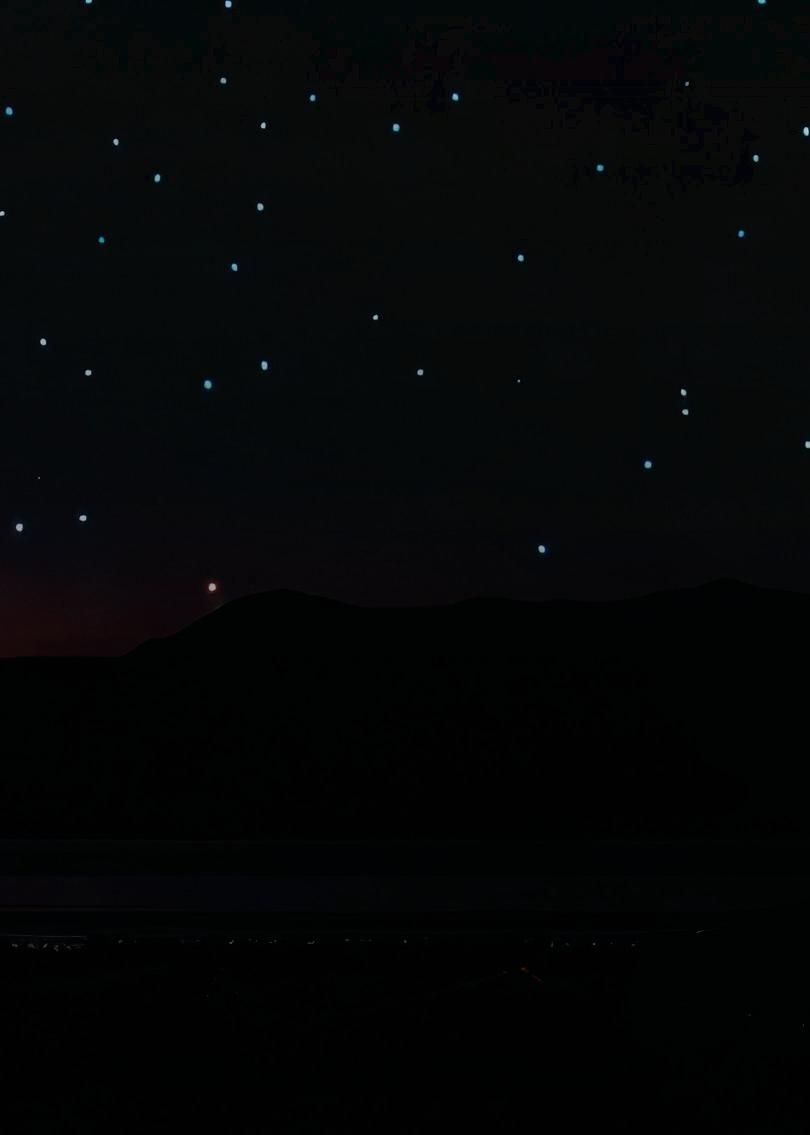


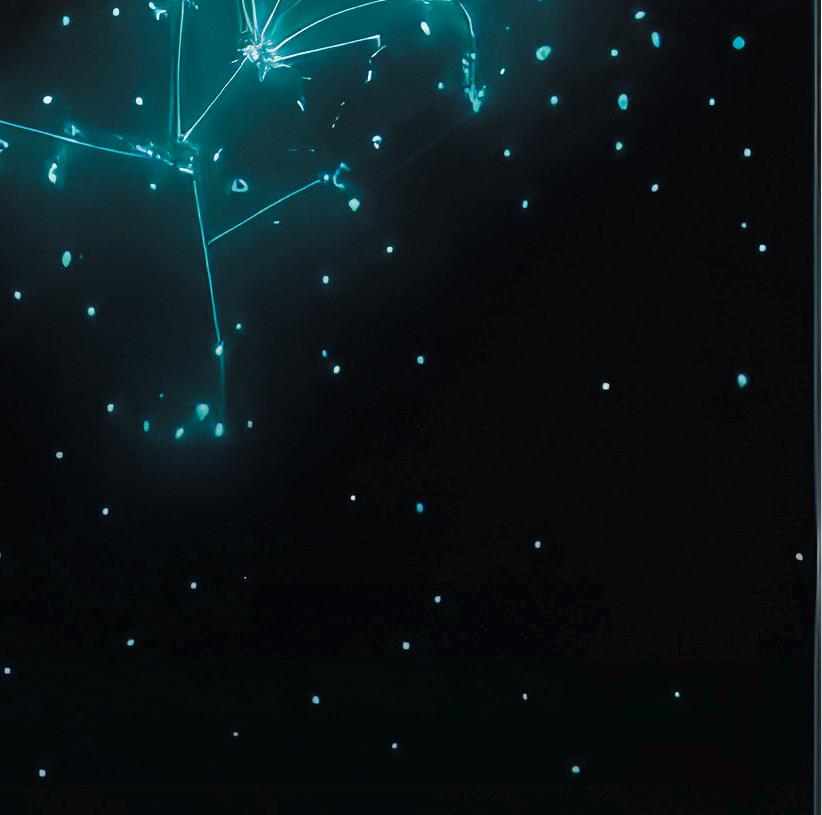
As installations rise, so do operational and business challenges — safety and worker welfare, operational continuity, and maintaining cost efficiency. The operation and maintenance of wind farms are complicated, exacerbated by varying environmental conditions, especially offshore. Although more efficient than onshore, O&M activities attribute upwards of 30% of overall costs due to inaccessibility issues, corrosion from seawater and harsher weather conditions.
Mechanical and engineering marvels, wind turbines are expensive and complex and have become the archetype of industrial IoT in action. Sensors, monitors and actuators play





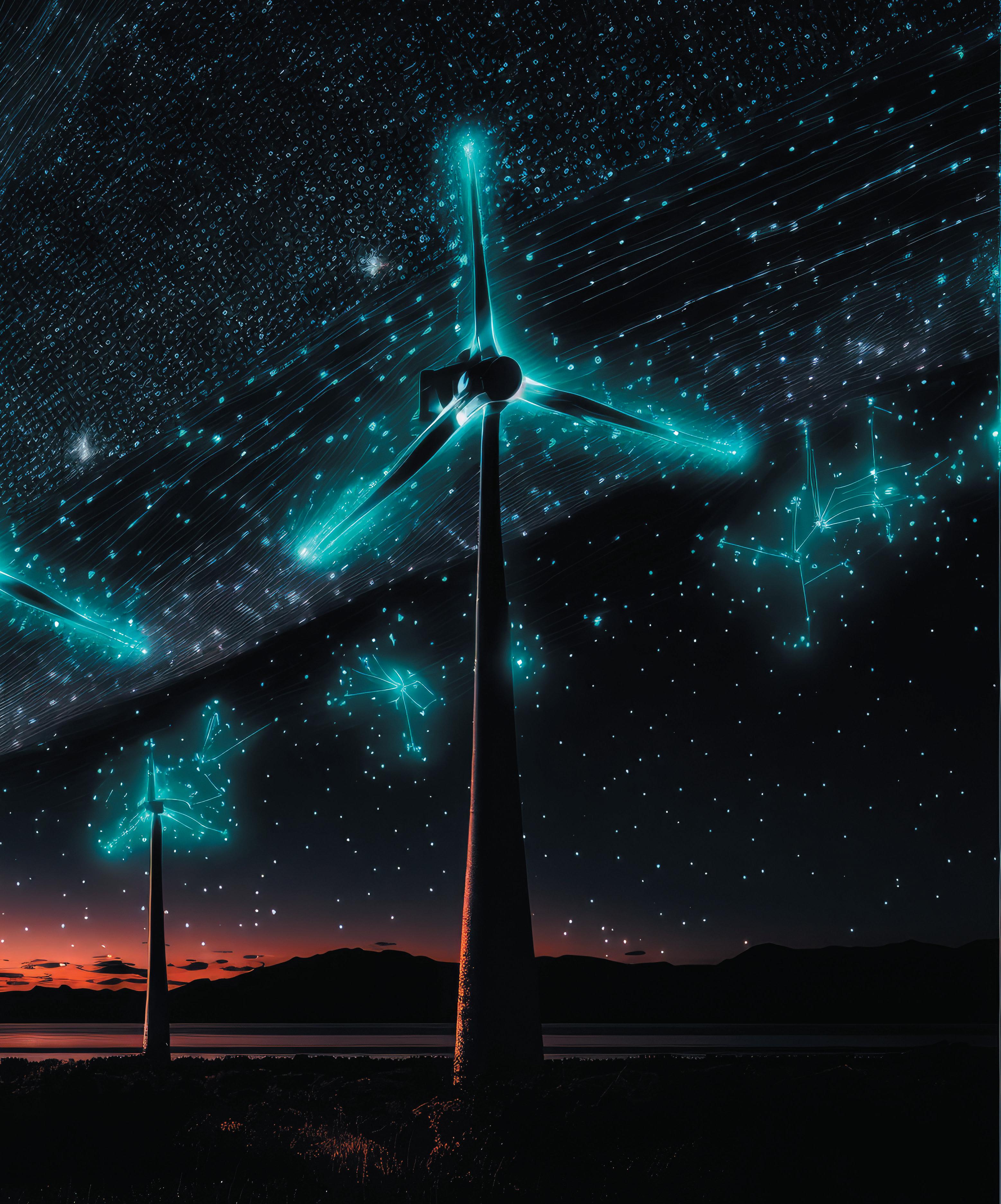
WINDPOWER ENGINEERING & DEVELOPMENT 19 MAY 2023
outsized roles in keeping turbines operational by generating volumes of current and historical operating data such as rotor speed, yaw angle, component temperatures, motor currents and vibration data. Other data types captured are production totals, power curves, availability metrics, alarms, warnings, fault data and exogenous weather conditions. Data that is not included, out-of-range or corrupted can result in a myriad of challenges and risks.

Digitalization is a game-changer for wind energy generation, but the overwhelming amount of data being generated needs to be analyzed to ensure turbines perform at peak efficiency and without issue. Smart turbines are beginning to hit the market with hundreds of embedded sensors that can continuously transmit hundreds of gigabytes of data per day. Even with a bank of full-time analysts, the sheer volume of data and disparate interpretations can push an entire team to analysis paralysis, where they are frozen in indecision.

The business case for AI for wind energy Wind has the potential to be the custodian of the energy transition, but complicated economies could threaten its position. A competitive marketplace gave farm operators leniency to pressure suppliers to drive down costs. Increased steel prices, supply chain disruptions, rising interest rates and other economic factors put a kibosh on cost flexibility. Prices are going up, and margins on both the supplier and wind farm sides are thin. The price of electricity from wind farms needs to increase to facilitate ongoing investments required to achieve climate goals. Without environmental pressures, wind farm operators might respond to such challenges by cutting expenses or putting the brakes on deployments. Those strategies are not feasible for generating long-term economic benefits or meeting net-zero goals. Wind energy requires additional technologies to maintain its position on the alternative energy pedestal.
AI technologies can extract, manage and interpret large streams of raw data that are transformed into predictive and prescriptive insights to address a range of challenges plaguing the wind energy industry, all in real time. AI predictive maintenance can improve planning, predict asset performance to prevent failures and downtime, identify underperforming assets and ensure effective follow-through. Profitability is improved via increasing energy production, maintenance costs are reduced, safety is increased, and operational efficiency is maximized. An AI-enabled asset management platform built explicitly for renewable energy can incorporate data from all asset types, including SCADA systems, weather and market pricing, to monitor realtime asset performance and production metrics. It can create self-help analytics and visualize key performance metrics and AI models so appropriate actions can be taken to optimize energy production. It can customize visualizations utilizing asset data and calculated metrics and
AI & WIND ENERGY WINDPOWER ENGINEERING & DEVELOPMENT 20 MAY 2023 www.windpowerengineering.com
customize and automate periodic reporting to meet essential stakeholder requirements. Reports can be developed instantly using any data parameters, including production, revenue, availability, fault data, maintenance costs and time, parts usage, anomaly detection and physics-informed predictive analytics and advanced AI can be utilized to prevent failures and reduce maintenance costs.
AI can also automatically detect underperforming or malfunctioning assets and send alerts to ensure timely and effective maintenance for asset longevity. Analysts and technicians spend less time processing and managing data and more time executing solutions that increase equipment uptime and productivity. AI technology can also provide visibility into

future spare parts needs and advanced planning of crane callouts to help avoid unnecessary costs and inefficient use of staff time, which reduces parts inventory, and repair turnaround times mean more generation and revenue. The consistently repeated actions facilitated by AI creates a compound effect for realizing the big returns the wind energy industry needs.
Use case: Predicting wind turbine pitch bearing failures
Pitch bearings connect the blade to the rotor hub and allow the blade angle to be indexed for optimal production at any given wind speed. Bearings are designed and certified to last for at least 20 years, yet only a small percentage survive that long in the field. Bearings

fail prematurely for a variety of reasons including fatigue, lubricant degradation, improper handling or mounting or contamination. The lead time and cost incurred to replace bearings is very high, often involving deployment of a crane.
Pitch bearings are typically inspected manually every six to 12 months during periodic maintenance, making early detection of issues difficult and expensive. The diagnosing begins with analyzing samples of bearing grease, which provides a bit of insight based on the amount and size of the wear particles in the grease. The turbine must be taken offline for inspection so technicians can enter the hub to pull the samples.
A best-case situation is predicting failures in advance. AI uses data from
AI & WIND ENERGY
contact our office for more information: training@abaris.com www.abaris.com +1.775.827.6568 ENROLL TODAY R-15: Advanced Windblade Repair R-5: Composite Windblade Repair High Expectations, Higher Level of Skill Aerospace Methods Applied to Windblade Repairs
existing sensors on the turbine to detect pitch bearing issues remotely. Signals can include commanded pitch position, actual pitch position, pitch motor current and temperature (for electric pitch systems), pitch system pressures (for hydraulic pitch systems), turbine fault history and other relevant indicators.
Pitch bearing health algorithms running on an AI cloud computing platform 24 hours a day require no input from analysts. The algorithms are used on turbines’ existing signals, so no additional hardware is required. Data is continually sent to the platform, which means the system is not taken offline nor does anyone have to physically climb the turbine. When the model predicts the pitch bearing may fail, the AI technology automatically notifies technicians to address the issue.
Failures are predicted with over 90% accuracy up to six months in advance. It gives project owners a satisfactory lead time to order and replace them. It minimizes turbine downtime and precludes multiple crane callouts which can save operators over $150,000 per site visit when repairing pitch bearings on multiple turbines.
Use case: Identifying wind turbine yaw misalignment
Deficient turbine yaw alignment is directly associated with lost energy production, and it exposes the turbine to increased
loads. Yaw misalignment is typically identified using light detection and ranging (LiDAR) measurement or physics-based methods applied to turbine SCADA data. While both techniques can be effective, they have significant disadvantages compared to AI. LiDAR is costly and physics-based methods require data over an extended period (typically one year) when yaw misalignment is present. A machine learning-based solution can act as an extension of the physics-based method by using only two months of historical data to train the machine learning model to detect a yaw misalignment of 5° or more with 96% accuracy. An analyst is automatically notified with the magnitude and direction of yaw misalignment (positive or negative) so the issue can be quickly corrected, and the turbine returned to optimal operating condition. An AI cloud computing platform runs 24/7 with no input required from analysts. No safety risks or additional costs are incurred from tower climbs, and turbines are kept operating at peak performance.
In one situation, an operator updated the turbine yaw offset remotely and resulted in as much as 2% additional annual energy production (AEP) — an annual revenue increase of $45,000 for the project.

Conclusion
Wind power is a technologically mature energy source with undeniable environmental and economic benefits.
It has all the necessary criteria to maintain its leading role in the global energy transition. Significant impacts are being realized from larger turbine sizes onshore and offshore. The increases in rotor diameter and hub height are creating massive improvements in wind-generated electricity and moving the needle on overall energy prices on a grand scale.
According to a survey by Lawrence Berkeley National Laboratory of the world’s preeminent wind power experts, technological advancements will be a crucial player in helping drive down the cost of energy between 17 to 35% by 2035 and 37 to 49% by 2050. AI is the most important technology a wind operator can deploy. It stands ready to deliver full-featured performance 24/7/365, providing everything operators need to ensure continued profitable operations.
As the world races to unwind a century of fossil fuel-powered energy production, the companies that embrace AI technologies today will be adequately poised to simultaneously optimize their operational efficiencies and maximize profitability while playing a central role in the evolution of a new sustainable world. The wave will be felt throughout the entire global economy. WPE
WINDPOWER ENGINEERING & DEVELOPMENT 22 MAY 2023 www.windpowerengineering.com
Sebastien Van de Walle
Protect wind turbines from lightning stikes... with the Megger DLRO2X



Standing hundreds of feet above ground, a wind turbine can be hit by lightning bolts every three seconds for hours-long periods. Why not have an instrument like the Megger DLRO2X for protection when needed.
The handheld DLRO2X can deliver up to 2 Amps of test current, meeting and surpassing the industry standard of 1 A for wind turbines. A dedicated test mode measures up to 3.2 ohms while eliminating complicated setup errors.


Some of the enhanced features of the DLRO2X include:
n Noise rejection mode which utilizes our patented Confidence Meter
n Ability to manually or automatically save results and export via memory stick
n Set min / max test limits with optional color-blind setting connections.

The optional KC-C test leads, when used with the DLRO2X, can measure the resistance of the lightning protection circuit of wind turbines. Their light weight make them inherently safe to use at extreme heights.
Don’t let a lightning strike harm your turbines. Put the protection in your hands with the DLRO2X.
For your FREE copy of Megger’s Guide to Low Resistance Testing, Visit us.megger.com/getbook


Reference Code: DLRO2X_WPED_MAY

US.MEGGER.COM

WINDPOWER ENGINEERING & DEVELOPMENT 24 MAY 2023 www.windpowerengineering.com
Adobe Stock
What can the U.S. offshore wind market learn from Europe?

 BY ANDY MALPAS • U.S. OFFSHORE WIND MARKET DIRECTOR • KENT
BY ANDY MALPAS • U.S. OFFSHORE WIND MARKET DIRECTOR • KENT


TheUnited States is in the midst of a clean energy revolution with offshore wind emerging as a pivotal source of renewable power. With an abundance of coastal winds, the United States could soon stand at the forefront of offshore wind production.
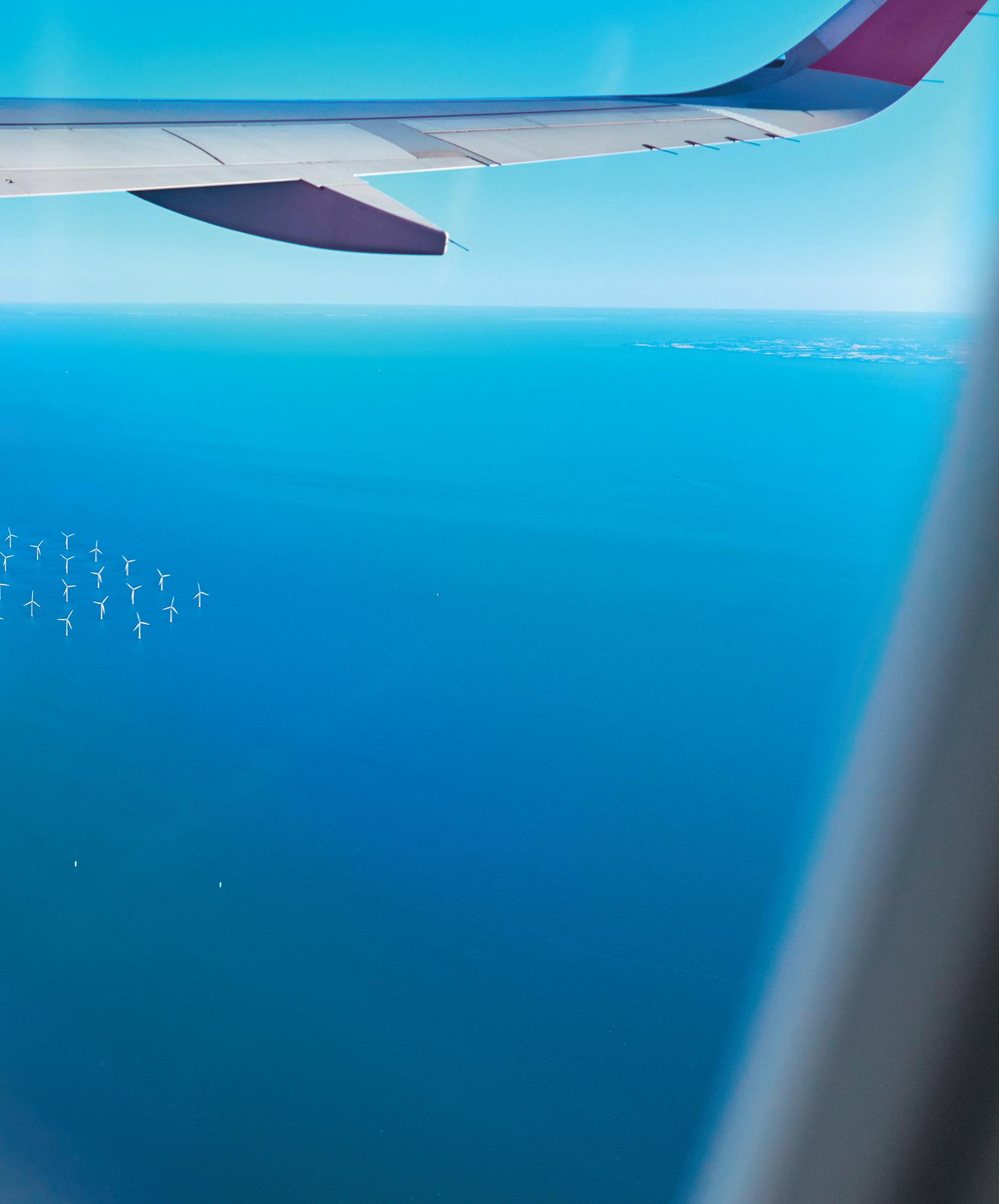
The global offshore wind industry has come a long way over the last two decades, but not without its fair share of challenges. From cable failures, welding defects, excessive seabed scour, corrosion and grout failures, to inadequate safety processes, underestimating wake effects and contracting and risk management blunders — nearly every aspect of a wind farm has a story to tell. With the United States’ rapid jump into offshore
wind production, it’s vital to look back at what has worked well, and not so well, elsewhere in the world. This is a great opportunity for the industry to bring a more holistic and open approach to project development.


Current project demand, a healthy list of upcoming lease auctions and the investment stimulus provided by the Inflation Reduction Act means a new U.S. supply chain is firmly on its way. A recent report by NREL estimates that to meet the current 30 GW by 2030 target, the United States needs at least 2,100 turbines and foundation structures, 6,800 miles of cables, 26 installation and transport vessels, 70 crew and service vessels, and an annual workforce of
up to 49,000 people. The report also estimates that upward of $22 billion of investment is needed in manufacturing and port development to establish a domestic supply chain by 2030.
The success of a project hinges on the strength, experience and competence of its supply chain. With every U.S. lease sale, we see new requirements encouraging domestic suppliers — while this is an important move to foster economic growth within individual states, it can often lead to a fragmented supply chain that’s costly and inefficient. To ensure the supply chain grows to be fit for purpose, greater collaboration is needed by individual states and better coordination is needed at the federal level.
WINDPOWER ENGINEERING & DEVELOPMENT 25 MAY 2023
Europe is no stranger to engineering and supply chain issues, with a record of high-profile litigations making the headlines over recent years. Fabrication and installation problems have plagued contractors, forcing them to announce financial warnings and project writedowns. This will continue to be an issue, especially in emerging markets where new players enter the market to help meet the growing demand. The rising cost of materials and inflation affecting all aspects of the supply chain will only exacerbate this. Care needs to be taken to ensure shortcuts aren’t used to meet unrealistic development schedules, and developers need to have close involvement throughout the process, especially with a fledgling supply chain.
Taking a holistic approach to wind farm development promotes the consideration of every element of the wind farm as early in the process as possible, allowing the complex interfaces between the various disciplines, work packages and development and operational phases, to be better understood and managed. The key is to not undertake activities in isolation, have robust design interfaces and have the foresight to properly consider the full life of the farm and its interaction with neighboring farms and other stakeholders. This promotes early and collaborative engagement with supply chains, allows O&M and safety considerations to be front and center, prevents late design changes and helps change to be dynamically managed with impacts already mapped out.
This should also be reflected in how contracts are managed — there needs to be the ability to share best practice, cross-collaborate and for the supply chain to demonstrate its experience and provide appropriate challenge to the decisions being made on a project.
And all of this must be balanced by the “cost” — not just the direct cost of designing, building and operating a wind farm, but the cost to develop a workforce and a sustainable supply chain that will benefit the whole industry for decades to come, and still achieve a levelized cost of energy which allows affordable electricity to be produced and provide a return to investors.
The United States is on the cusp of becoming a leader in offshore wind energy production, and it’s an exciting time to be a part of the industry development. Taking cues from Europe, the United States can start out with a better understanding of the challenges involved and avoid common pitfalls like those faced by projects in other parts of the world, ultimately developing a more efficient, sustainable and costeffective offshore wind industry. WPE
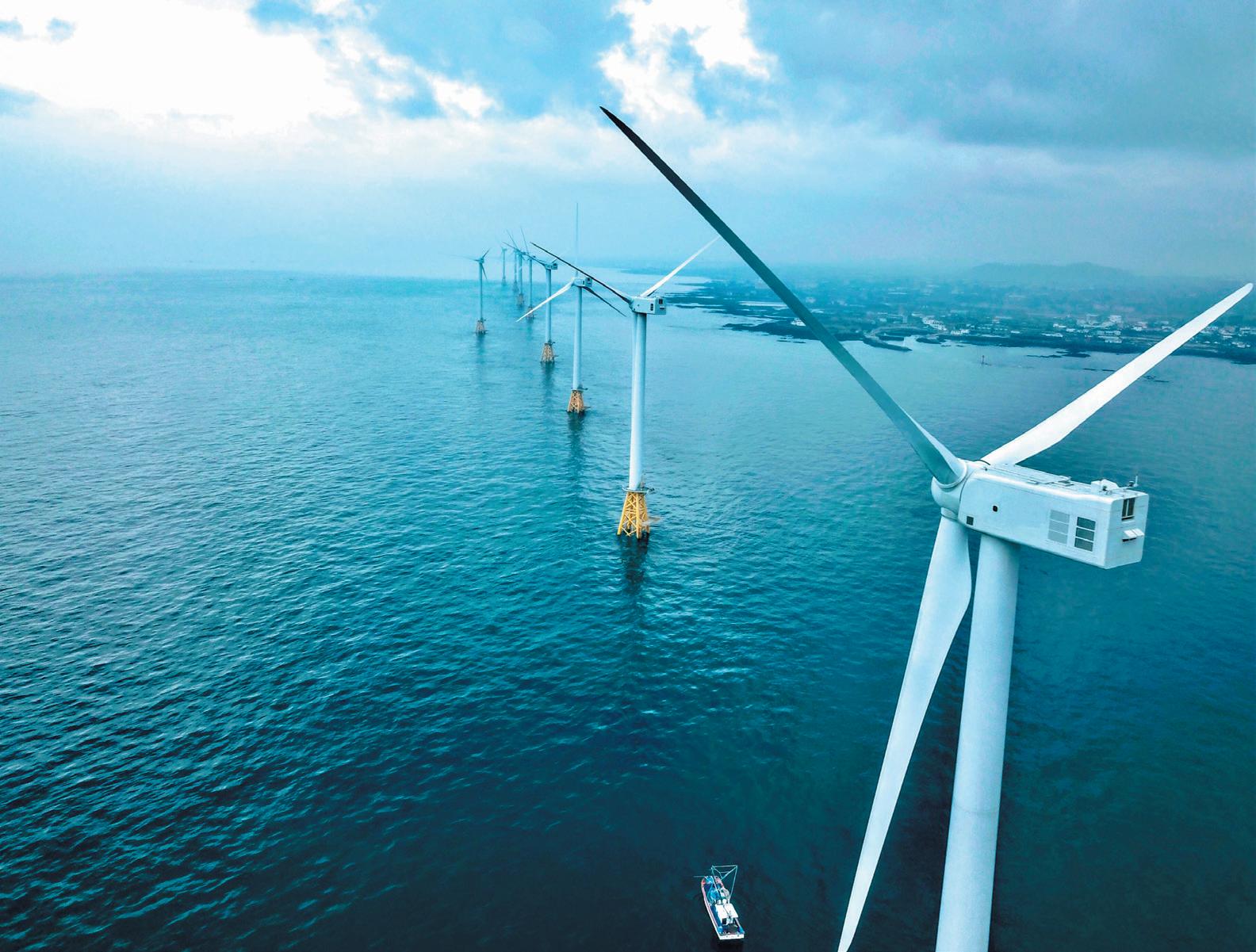
WHAT THE U.S. OFFSHORE MARKET CAN LEARN FROM EUROPE WINDPOWER ENGINEERING & DEVELOPMENT 26 MAY 2023 www.windpowerengineering.com
THE KEY IS TO NOT UNDERTAKE ACTIVITIES IN ISOLATION, HAVE ROBUST DESIGN INTERFACES AND HAVE THE FORESIGHT TO PROPERLY CONSIDER THE FULL LIFE OF THE FARM AND ITS INTERACTION WITH NEIGHBORING FARMS AND OTHER STAKEHOLDERS.
Adobe Stock
WIND SPOTLIGHT: WIND 4.0 AND THE LATEST INDUSTRIAL REVOLUTION

The progress of industry pushes ever forward, and those technological breakthroughs are marked by named eras. Globally, manufacturers believe they’re currently experiencing the fourth industrial revolution, dubbed Industry 4.0. The wind industry is also participating, and Valery Godinez, vice president of engineering and product development at MISTRAS Group, is here to discuss what that means exactly. MISTRAS is a multinational organization focused on maximizing the operational uptime of critical infrastructure like wind turbines.
Below is an excerpt of the MISTRAS Group’s Wind Spotlight with Windpower Engineering & Development, but be sure to listen to the full episode on your favorite podcast app.
Lately people have been talking and writing a lot about concepts like Digital Transformation, Big Data, Industry 4.0, Artificial Intelligence, Smart Sensors, Digital Twins, etc. How are these themes related to each other and to
the future of the wind industry?
Let me take you back in time to about two and a half centuries ago, when the first industrial revolution happened, we all learn about this in school. It happened in England in the middle of the 18th century. What we’d never been taught in school is that about 100 years later, there was a second industrial revolution, and this was triggered by the availability of electric power.
Now we are in the middle of the fourth industrial revolution, in which new developments in the digital domain and the connectivity with the physical world through sensors allow us to harness the potential of digital-physical interaction. And this is where all these concepts like Big Data, AI smart sensors, digital twins, are part of what is called the digital transformation, which is an intrinsic part of something that is called Industry 4.0, which is the big, big changing paradigm in this fourth industrial revolution.
There is also another concept starting to appear in conversations, Wind 4.0. What is it and what is its main goal?



It's very interesting that this new concept of Industry 4.0 starts leaking into specific aspects in different markets. And in the case of our industry, the way people refer to the application of this new industry 4.0 as “Wind 4.0.” And what is obvious is that Wind 4.0 includes all the aspects of wind energy generation and transmission, in all the components of a wind turbine. So, in a nutshell it’s the application of Industry 4.0 concepts to the wind industry. And what is very, very important is that Wind 4.0 has as an

objective to really increase wind turbine reliability, and energy production.
How can we use data to optimize wind turbine O&M and increase uptime?


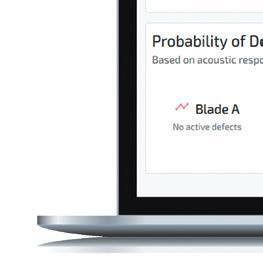
All this data will offer a continuous history of the wind turbine. If you combine it correctly, the data, for example, from inspections in the cementation of the blade, the tower, the nacelle, the drive train, bearings, the blades themselves. What you're doing is you're creating a digital copy of the blade, pretty much like digital copies that exist of you or me on the internet by looking at what type of movies we watch, what type of things we buy online — that’s our digital history.

Sometimes we hear the expression “data-rich but information-poor.” What does this mean, and what impact does it have in the Wind 4.0 paradigm? When you talk to people, everybody talks about data. But you can be, drowning in data but you are starving for insights, right? All this data if it's not correctly processed, if it doesn't have information that can be taken to take action, it really doesn't fulfill its purpose. You can collect a lot of data, you can sensor up a wind turbine, every single component, but unless you are able to take the data, process it and present it in a way that allows the operator or the owner of that turbine to take action, that data is useless. That is the challenge that we’re facing. WPE
This podcast is sponsored by Mistras Group
ADVERTORIAL
WINDPOWER ENGINEERING & DEVELOPMENT 27 MAY 2023
www.mistrasgroup.com www.sensoria.com
LEADERSHIP TEAM
VP of Sales

Mike Emich 508.446.1823 memich@wtwhmedia.com
Managing Director Scott McCafferty 310.279.3844 smcca erty@wtwhmedia.com


SALES
Jami Brownlee 224.760.1055 jbrownlee@wtwhmedia.com
Ashley Burk 737.615.8452 aburk@wtwhmedia.com
EVP Marshall Matheson 805.895.3609 mmatheson@wtwhmedia.com
Publisher Courtney Nagle cseel@wtwhmedia.com 440.523.1685
Jim Powers 312.925.7793 jpowers@wtwhmedia.com


Abaris Training 21 AZTEC Bolting ...................................................... Cover, 17 Megger 23 Mistras ............................................................................ 27 Norbar Torque Tools, Inc. IFC Yuken ............................................................................. BC WINDPOWER ENGINEERING & DEVELOPMENT 28 MAY 2023 www.windpowerengineering.com AD INDEX WINDPOWER ENGINEERING & DEVELOPMENT
@Windpower_Eng Looking for more ways to connect?
Follow along @Windpower_Eng

Looking for more ways to connect?
Connect with Industry Experts covering everything in wind energy from turbine design to installation to maintenance.







• Superior Pitch Control • Multiple years of valve life • 3-Year warranty • Over 4,000 valves installed ALA Industries Limited • 3410 Delta Drive • Portage, IN 46368 • Tel: (219) 762-2059 • Fax: (219) 762-2066 • www.alaindustrieslimited.com ALA Industries Limited A Decade of Leadership in Wind Energy.






























































































 BY GERRIT VAN DOORNIK • PRESIDENT OF WIND SOLUTIONS • CLEAN ENERGY SERVICES
BY GERRIT VAN DOORNIK • PRESIDENT OF WIND SOLUTIONS • CLEAN ENERGY SERVICES




































































































 BY AMY KOMATSUZAKI • VP OF REMOTE OPERATIONS • IHI POWER SERVICES CORP.
BY AMY KOMATSUZAKI • VP OF REMOTE OPERATIONS • IHI POWER SERVICES CORP.




































 BY ROB BUDNY • VP OF RENEWABLES • SPARKCOGNITION
BY ROB BUDNY • VP OF RENEWABLES • SPARKCOGNITION
































 BY ANDY MALPAS • U.S. OFFSHORE WIND MARKET DIRECTOR • KENT
BY ANDY MALPAS • U.S. OFFSHORE WIND MARKET DIRECTOR • KENT



























